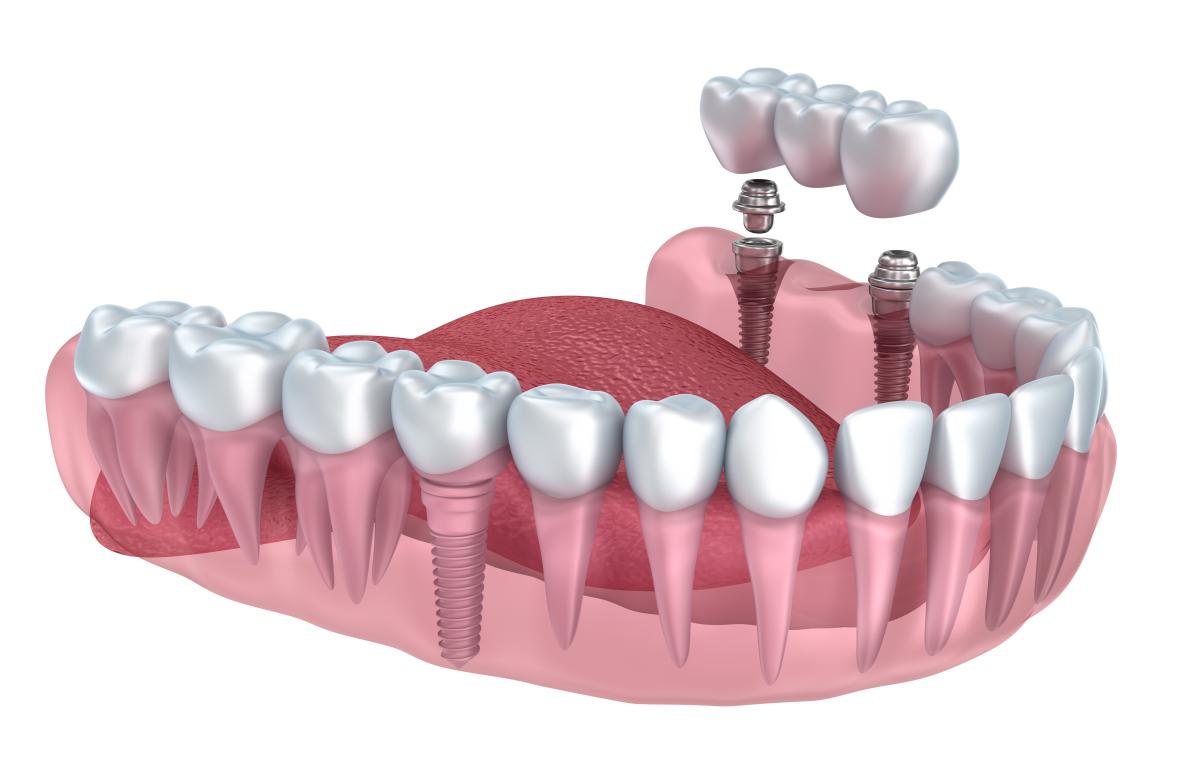A dental implant is similar to an artificial root. It is most often a titanium screw placed into the jawbone. It replaces the root (s) of an absent tooth and serves as a support for creating a crown or bridge, for stabilising a removable prosthesis, etc.
What is an implant inserted?
An implant may be inserted either immediately after extracting a tooth, or after the bone and gums heal. The surgical procedure is often simple with little pain. It is done under local anaesthesia like for treating a cavity.
The permanent prosthesis is done after the implant is integrated into the bone (after a period of 2 to 6 months). Under some conditions, a temporary prosthesis may be immediately put into place after inserting the implant.
Indications and contraindications
For inserting an implant, the jawbone volume and quality must be sufficient. These parameters are generally evaluated using a CT scan. However, it is also possible to increase the bone volume using a bone graft. It is also important that the neighbouring teeth and gums be healthy.
A medical questionnaire will make it possible to rule out potential contraindications: irradiation to the face, high-risk infectious endocarditis (infection of the heart wall by bacteria which may come from the mouth).
Relatively more common contraindications: poor hygiene, tobacco, imbalanced diabetes, taking anticoagulants, etc.
Remember
The implant can replace one or several teeth without affecting the other teeth and offers a permanent and comfortable prosthesis.
A single absent tooth can destabilise the entire mouth. If it is not replaced, it is the first step towards a process of loosening or multiple tooth loss.
If you are concerned, you should, like all implant users, maintain extremely rigorous dental hygiene and have very regular check-ups.
For more informations or to book an appointment with
Dr Antoine DISS – Dentist in Nice (France), please contact us by email or call 0033 492 145 145

